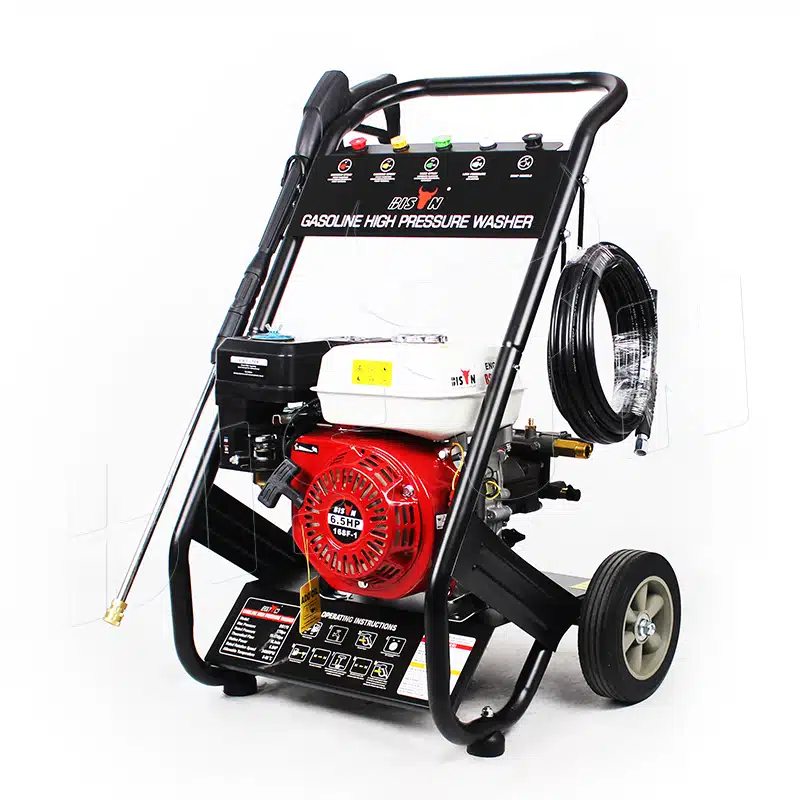How to Use a Gasoline Pressure Washer Like a Pro (Complete Guide)
How to Use a Gasoline Pressure Washer Like a Pro (Complete Guide)
Blog Article

Few tools rival the power and versatility of a gasoline pressure washer when it comes to outdoor cleaning. Whether you're blasting away grime from a concrete driveway or restoring the look of your wooden deck, these machines are built to handle tough jobs efficiently and effectively.
In this post, we’ll walk you through how to use a gasoline pressure washer step by step — from setup to operation — along with essential safety tips, advanced cleaning techniques, and answers to the most common FAQs. Whether you're a first-time user or looking to sharpen your skills, this guide has everything you need.
Why Choose a Gasoline Pressure Washer?
Gasoline pressure washers stand out for their portability, power, and independence from electric outlets. Unlike electric models, which require a power source nearby, gasoline washers give you the freedom to work wherever the job takes you — no cords, no limits.
Here’s why many homeowners and professionals prefer them:
-
Portability: Clean large areas without needing a nearby power supply.
-
Powerful Performance: Higher pressure and flow rates make cleaning faster and more thorough.
-
Versatile: Tackle everything from car washing to stripping paint off concrete.
-
Freedom to Work Anywhere: Even in remote areas or during power outages.
Need a reliable machine? Check out top Gasoline high pressure washer manufacturers for durable and high-performance options.
Components of a Gasoline Pressure Washer
Before you get started, it’s helpful to understand the main parts of your pressure washer:
-
Engine: Powers the pump using gasoline.
-
Pump: Pressurizes water for powerful cleaning.
-
High-pressure hose: Transfers pressurized water to the spray gun.
-
Spray gun and nozzles: Controls the direction and intensity of the spray.
-
Frame and wheels: Provide stability and mobility.
Knowing your equipment inside and out helps ensure safe and effective use.
Step-by-Step Setup Instructions
-
Assemble the Unit: Attach the handle, install the wheels, and connect the high-pressure hose to the pump and spray gun.
-
Add Fluids:
-
Check oil levels.
-
Fill the tank with unleaded gasoline (don’t overfill).
-
-
Attach the Right Nozzle:
-
Red (0°): Tough stains
-
Yellow (15°): Concrete
-
Green (25°): General use
-
White (40°): Delicate surfaces
-
Black (65°): Soap application
-
-
Prime and Start:
-
Connect to a water source.
-
Turn on water, prime the pump (if required).
-
Set the choke, throttle, and pull the starter cord.
-
Safety First: What to Wear
-
Safety goggles: Protect your eyes from flying debris.
-
Non-slip gloves: Get a better grip and protect your hands.
-
Closed-toe shoes: Avoid injury from drops or slippery surfaces.
-
Protective clothing: Long sleeves and waterproof outerwear are ideal.
-
Ear protection: Gasoline models are loud — don’t skip this.
Operating the Pressure Washer Like a Pro
Adjust Pressure Settings
-
High Pressure: Use for concrete, paint stripping.
-
Medium Pressure: Great for fences, outdoor furniture, vehicles.
-
Low Pressure: Best for windows, siding, and painted surfaces.
Best Practices
-
Keep a consistent distance from the surface.
-
Use smooth, overlapping strokes.
-
Start with a wide-angle nozzle and adjust as needed.
Advanced Cleaning Tips
-
Use detergents for oil or mildew — apply with the black nozzle, let it sit, then rinse.
-
For hard-to-reach areas, use extension wands or pivoting nozzles.
-
Choose eco-friendly, biodegradable cleaners to protect the environment.
-
Use water-saving attachments and avoid excessive runoff.
Specific Tasks
-
Decks: Use low pressure and a wide nozzle. Pre-treat with wood cleaner for best results.
-
Driveways: A yellow nozzle with sweeping motions works great.
-
Vehicles: Use a green or white nozzle and keep a safe distance.
-
Graffiti: Pre-treat with graffiti remover and follow up with a high-pressure nozzle.
FAQs
1) Can I use a gasoline pressure washer indoors?
No. Gasoline engines produce carbon monoxide. Only use them outdoors in well-ventilated spaces.
2) How often should I maintain it?
Check oil, spark plugs, and filters regularly. Follow your model’s manual for intervals.
3) Can I use hot water with it?
Most gasoline pressure washers are cold-water only. Using hot water may damage the pump.
4) How do I winterize it?
Drain fuel, flush with pump antifreeze, and store in a dry place.
5) Can I use it on my car?
Yes, but stick to low-pressure nozzles and keep your distance to avoid damaging paint.
6) Is it safe for windows or wood decks?
Yes — as long as you use the right nozzle (usually white) and maintain low pressure.
Conclusion
Using a gasoline pressure washer isn’t just about blasting away dirt — it’s about doing it efficiently, safely, and responsibly. With the right setup, knowledge of nozzle types, safety gear, and cleaning techniques, you’ll be able to transform your outdoor spaces like a pro.
If you’re in the market for one, consider exploring trusted Gasoline high pressure washer manufacturers for reliable machines built to last.
Report this page